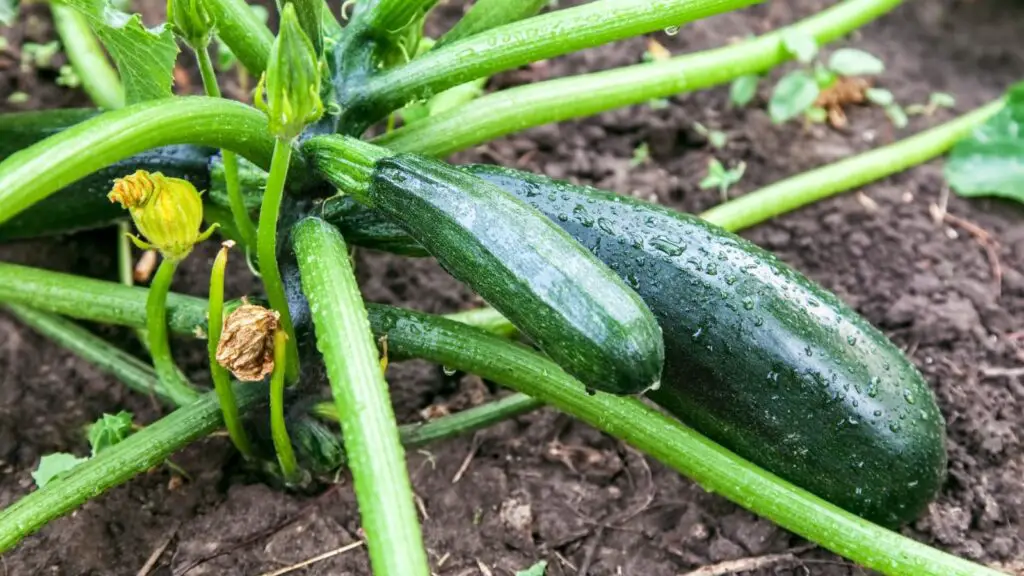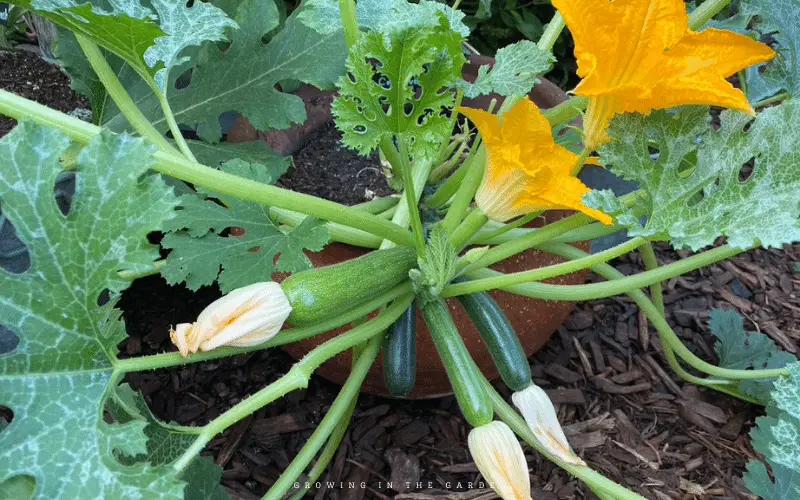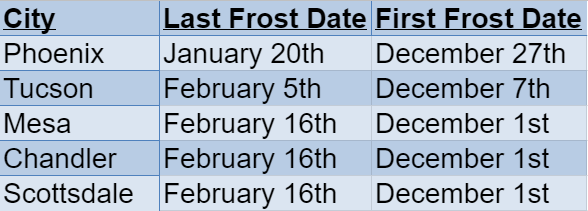So you want to plant some zucchini in sunny Arizona, huh? Well, let me tell you, timing is everything when it comes to planting this delicious summer squash. If you’re wondering when the Best Time to Plant Zucchini in Arizona the desert state, look no further. In this article, we’ll explore the ideal planting season for zucchini in Arizona, taking into account the region’s unique climate and weather patterns. By the end, you’ll have all the knowledge you need to grow your own bountiful zucchini crop and satisfy your cravings for fresh, homegrown goodness. So grab your gardening gloves and let’s get started!
Factors to Consider
Climate
When it comes to planting zucchini in Arizona, the climate is an essential factor to consider. Arizona is known for its hot, arid climate, with scorching summers and mild winters. Zucchini plants thrive in warm temperatures, so it’s crucial to plant them when the weather is consistently warm. It’s recommended to wait until all danger of frost has passed and the average temperature during the day consistently stays above 60°F (15°C).
Soil
The soil quality plays a significant role in the success of your zucchini plants. Zucchinis prefer well-draining soil that is rich in organic matter. Before planting, it’s essential to assess the soil’s texture and make any necessary improvements. In Arizona, where the soil is often sandy or clay-like, adding organic matter is particularly crucial. This will help improve the soil structure, retain moisture, and provide vital nutrients for your zucchini plants.
Variety
Choosing the right zucchini variety for your Arizona garden is essential. Some zucchini varieties are more tolerant of heat and drought, making them better suited for Arizona’s climate. Look for heat-tolerant varieties such as “Black Beauty,” “Costata Romanesca,” or “Tromboncino.” These varieties have proven to perform well in Arizona, producing excellent yields even in hot conditions.
Best Months to Plant
Spring
Spring is an ideal time to plant zucchini in Arizona, as the weather starts to warm up, and the risk of frost diminishes. Aim to plant your zucchini seeds or seedlings around late February to early March for optimal growth. This timing will allow your plants to establish themselves before the scorching heat of summer arrives. By planting in the spring, you’ll give your zucchini plants the best chance of thriving throughout the growing season.
Fall
In Arizona, where summers can be exceptionally hot, planting zucchini in the fall can be a great alternative. Fall planting allows you to take advantage of the milder temperatures and extend your zucchini growing season. Aim to plant your zucchini seeds or seedlings in late summer, around late August to early September. This timing will give your plants enough time to grow and produce a bountiful harvest before the first frost arrives.

Preparing the Garden
Clearing the Area
Before planting your zucchini, it’s essential to clear the designated area in your garden. Remove any weeds, rocks, or debris that may hinder the growth of your plants. Clearing the area allows your zucchini plants to have access to sunlight and promotes better air circulation, reducing the risk of disease.
Amending the Soil
As mentioned before, amending the soil is crucial in Arizona’s arid climate. Before planting, add organic matter such as compost, well-rotted manure, or peat moss to improve the soil’s texture and fertility. Incorporate the organic matter into the top few inches of soil and ensure it is evenly distributed. This will provide a nutrient-rich environment for your zucchini plants to thrive.
Adding Organic Matter
In addition to amending the soil, consider adding a layer of organic matter, such as mulch, around your zucchini plants. Mulching helps conserve soil moisture, suppress weed growth, and maintain a more consistent soil temperature. Place a 2-3 inch layer of organic mulch, such as straw or wood chips, around the base of your plants, leaving a small space around the stem to prevent rot.
Planting Zucchini Seeds
Seed Sowing
If you choose to start your zucchini plants from seeds, sow them directly into the prepared garden bed. Plant the seeds about 1 inch deep, spacing them around 2-3 feet apart. Ensure that the soil is kept consistently moist until the seeds germinate.
Seed Depth and Spacing
Zucchini seeds should be planted approximately 1 inch deep in the soil. This depth provides a suitable environment for germination while protecting the seeds from drying out in the arid Arizona climate. Proper spacing is also crucial to allow sufficient airflow and prevent overcrowding. Aim for a spacing of 2-3 feet between each zucchini plant to ensure optimal growth and productivity.
Watering
Water is vital for the successful germination and establishment of zucchini seeds. After planting the seeds, thoroughly water the area. The goal is to keep the soil consistently moist but not overly saturated. In Arizona’s hot climate, this may require watering every 2-3 days, especially during the initial stages of growth. Monitor the soil moisture regularly and adjust your watering schedule accordingly to ensure optimal conditions for your zucchini seeds.
Mulching
Once your zucchini seeds have sprouted, consider adding a layer of organic mulch around the base of your plants. Mulching helps retain soil moisture, reduce weed growth, and maintain a more stable soil temperature. It also acts as a barrier against soil-borne diseases. Apply a layer of organic mulch, such as straw or wood chips, around the plants, making sure to leave a small space around the stem to prevent rot.

Caring for Zucchini Plants
Watering
Consistent and adequate watering is crucial for the health and productivity of your zucchini plants. In Arizona’s hot and arid climate, zucchinis may require frequent watering. Aim to provide your plants with about 1-1.5 inches of water per week, either through rainfall or irrigation. It’s best to water deeply, ensuring that the water reaches the plant’s roots. Avoid overhead watering, as this can promote the development of fungal diseases. Instead, use drip irrigation or water at the base of the plants.
Fertilizing
Zucchini plants benefit from regular fertilization to ensure robust growth and abundant yields. In the nutrient-deficient soils of Arizona, it’s essential to supply your zucchinis with the necessary nutrients. Use a balanced organic fertilizer or compost every 4-6 weeks during the growing season. Follow the package instructions for proper application rates. Be careful not to over-fertilize, as excessive nitrogen can lead to excessive foliage growth at the expense of fruit production.
Pruning
Pruning zucchini plants can help improve airflow, reduce disease risk, and promote better fruit development. Remove any damaged or diseased leaves or branches regularly. Additionally, consider pruning the central stem to encourage branching and increase overall productivity. However, avoid excessive pruning, as zucchinis benefit from having some foliage to protect the fruits from sunburn.
Pest and Disease Control
In Arizona, zucchini plants may face various pests and diseases. Common pests include aphids, cucumber beetles, squash bugs, and spider mites. Regularly inspect your plants for signs of infestation, such as yellowing leaves or chewed foliage. Use organic pest control methods like handpicking or spraying with insecticidal soaps or neem oil to manage pests effectively. Additionally, be vigilant for common diseases such as powdery mildew and downy mildew. Provide adequate spacing between plants, practice good sanitation, and apply appropriate fungicides if necessary.
Harvesting Zucchini
Recognizing Maturity
Zucchini fruits are typically ready for harvest when they reach a length of 6 to 8 inches. Harvesting at this size ensures a tender texture and optimal flavor. Avoid allowing the fruits to overgrow, as they can become tough and less flavorful. Frequently check your zucchini plants for mature fruits, as they can grow rapidly, especially in Arizona’s warm climate.
Harvesting Techniques
To harvest zucchini, use a sharp knife or garden shears to cut the fruit at the stem, leaving a small portion attached. This minimizes damage to the plant and encourages continuous fruit production. Harvesting regularly, every couple of days, encourages the plant to produce more zucchinis. Be careful not to twist or tear the fruits from the plant, as this can cause damage and affect future harvests.

Extending the Growing Season
Using Shade Cloth
In Arizona’s scorching summers, providing some shade for your zucchini plants can help them withstand the extreme heat. Shade cloth can be used to reduce the intensity of direct sunlight, preventing sunburn and heat stress. Install shade cloth above your zucchini plants, ensuring that it allows sufficient airflow. Monitor the temperature under the shade cloth and remove it once the weather becomes milder.
Using Row Covers
Row covers are another effective method of extending the growing season for your zucchini plants. These lightweight fabric covers create a microclimate within the garden bed, protecting the plants from frost and potentially increasing the temperature slightly. Row covers should be used in the fall and late winter when there is a risk of frost. Remember to remove the covers during the day to allow pollination and airflow.
By considering the climate, soil conditions, and variety, choosing the best months to plant, properly preparing the garden, caring for the plants, harvesting at the right time, and using techniques to extend the growing season, you can successfully grow zucchini in Arizona. With a bit of attention and care, you’ll soon be enjoying an abundance of fresh, homegrown zucchinis in your own backyard.



